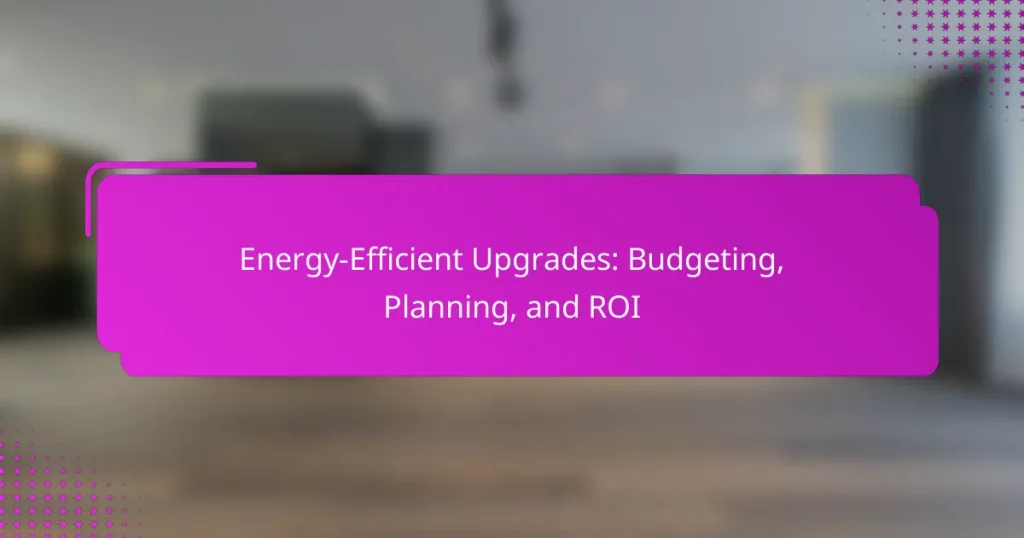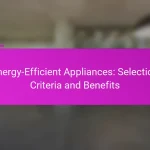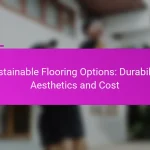Investing in energy-efficient upgrades can lead to significant savings on utility bills while enhancing home comfort. By carefully budgeting and planning these improvements, homeowners can prioritize projects that offer the best return on investment. Key upgrades such as insulation, energy-efficient windows, and smart thermostats not only reduce energy consumption but also contribute to a more sustainable living environment.
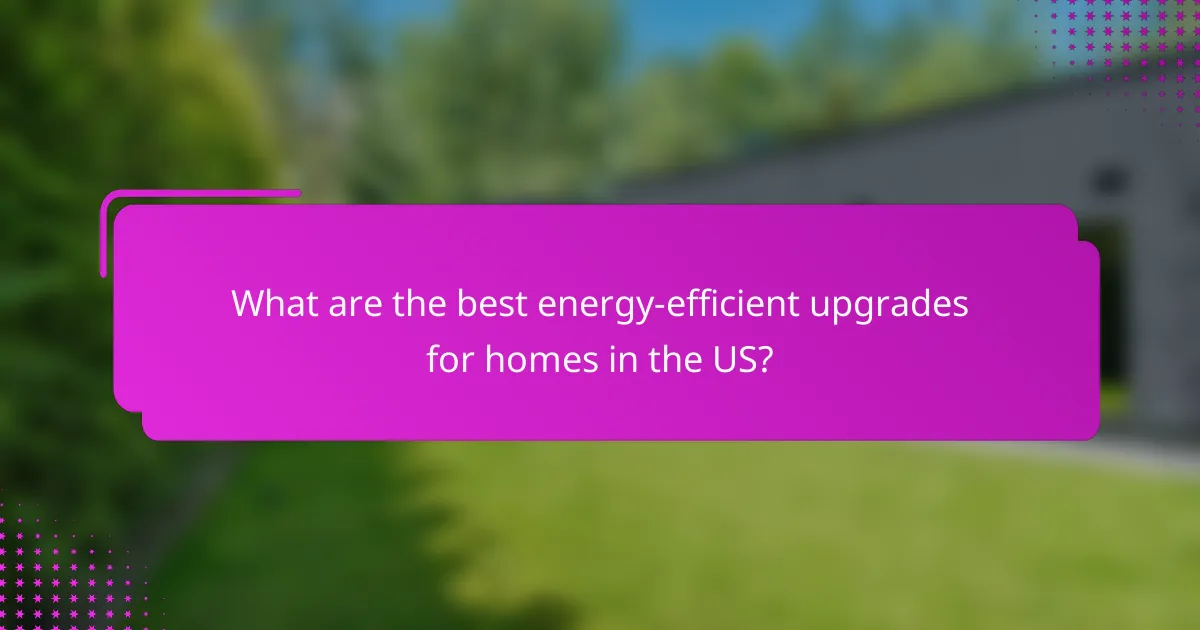
What are the best energy-efficient upgrades for homes in the US?
The best energy-efficient upgrades for homes in the US include insulation improvements, energy-efficient windows, smart thermostats, LED lighting, and high-efficiency HVAC systems. These upgrades can significantly reduce energy consumption, lower utility bills, and enhance overall comfort.
Insulation improvements
Upgrading insulation is one of the most effective ways to enhance energy efficiency in a home. Proper insulation minimizes heat transfer, keeping your home warmer in winter and cooler in summer. Consider adding insulation to attics, walls, and basements to maximize energy savings.
When selecting insulation, look for materials with high R-values, which indicate better thermal resistance. Common options include fiberglass batts, spray foam, and cellulose. A well-insulated home can reduce heating and cooling costs by 20-30%.
Energy-efficient windows
Energy-efficient windows help reduce energy loss through improved glazing and frame materials. Look for windows with double or triple panes, low-emissivity (Low-E) coatings, and gas fills like argon or krypton for optimal performance. These features can significantly lower heating and cooling expenses.
Replacing old windows can yield a return on investment of around 70-80% when selling your home. Additionally, consider window films or thermal curtains as a cost-effective alternative to full replacement.
Smart thermostats
Smart thermostats optimize heating and cooling schedules based on your lifestyle, leading to energy savings. They can learn your habits and adjust temperatures automatically, ensuring comfort while minimizing energy use. Many models allow remote control via smartphone apps.
Installing a smart thermostat can save homeowners 10-15% on heating and cooling costs annually. Look for models that are compatible with your HVAC system and offer features like geofencing and energy usage reports.
LED lighting
Switching to LED lighting is a straightforward upgrade that can significantly reduce electricity consumption. LEDs use up to 80% less energy than traditional incandescent bulbs and last much longer, often exceeding 25,000 hours of use.
Consider replacing all high-use fixtures with LED options. While the initial cost may be higher, the long-term savings on energy bills and replacement costs make LEDs a smart investment.
High-efficiency HVAC systems
Upgrading to a high-efficiency HVAC system can drastically improve energy efficiency. Look for units with a Seasonal Energy Efficiency Ratio (SEER) rating of 16 or higher for air conditioners and an Annual Fuel Utilization Efficiency (AFUE) rating of 90% or more for furnaces.
Regular maintenance, such as changing filters and scheduling annual inspections, can also enhance system efficiency. Investing in a high-efficiency system can lead to energy savings of 20-50% compared to older models, making it a valuable upgrade for homeowners.
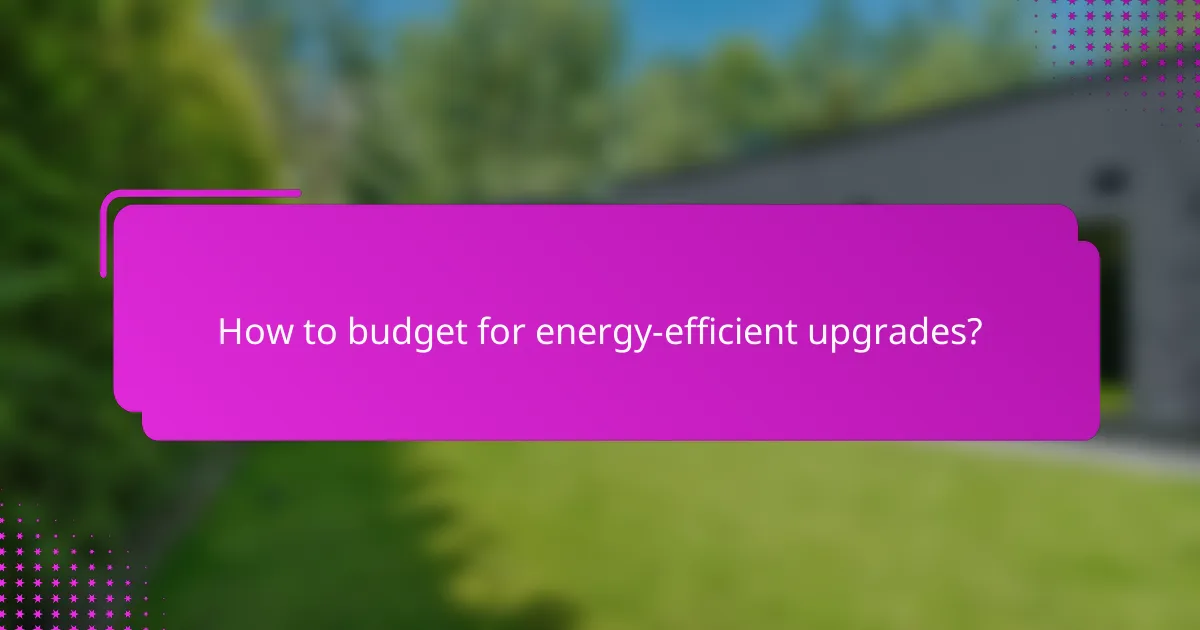
How to budget for energy-efficient upgrades?
Budgeting for energy-efficient upgrades involves assessing costs, identifying financial incentives, and prioritizing projects based on their return on investment (ROI). A well-structured budget can help maximize savings while ensuring that upgrades are both effective and affordable.
Estimate costs for each upgrade
Begin by researching the costs associated with various energy-efficient upgrades, such as insulation, energy-efficient windows, or HVAC systems. Typical costs can range from a few hundred to several thousand dollars, depending on the scope and scale of the project.
Gather quotes from contractors and compare prices for materials to get a clearer picture of potential expenses. Consider using online calculators that estimate energy savings based on specific upgrades to help justify the investment.
Identify available rebates and incentives
Many local and federal programs offer rebates and incentives for energy-efficient upgrades, which can significantly reduce upfront costs. Check with your local utility company and government websites to find available programs in your area.
For example, some states in the U.S. provide tax credits or rebates for installing solar panels or energy-efficient appliances. Make sure to understand the eligibility requirements and application processes for these incentives to maximize your savings.
Prioritize upgrades based on ROI
When deciding which upgrades to pursue, focus on those with the highest ROI. Generally, upgrades that reduce energy consumption significantly, such as improving insulation or upgrading to high-efficiency heating and cooling systems, tend to offer better returns.
Create a simple ranking system based on estimated costs, potential energy savings, and available incentives. This approach will help you allocate your budget effectively and ensure that you invest in upgrades that provide the best financial benefits over time.

What is the planning process for energy-efficient upgrades?
The planning process for energy-efficient upgrades involves assessing current energy use, identifying potential improvements, and creating a structured approach for implementation. This ensures that upgrades are both effective and financially viable, maximizing return on investment.
Conduct an energy audit
An energy audit is the first step in the planning process, providing a detailed analysis of energy consumption in a building. This assessment identifies inefficiencies and opportunities for upgrades, such as insulation improvements, HVAC system enhancements, or lighting changes.
Consider hiring a certified auditor who can use specialized tools to measure energy usage accurately. The cost of an energy audit typically ranges from a few hundred to a couple of thousand dollars, depending on the building size and complexity.
Develop a phased implementation plan
A phased implementation plan breaks down the energy-efficient upgrades into manageable stages, allowing for better budgeting and resource allocation. Start by prioritizing upgrades based on potential energy savings and upfront costs.
For example, you might first focus on low-cost measures like LED lighting and then plan for larger investments, such as upgrading HVAC systems. This approach helps spread costs over time and allows for adjustments based on financial performance and energy savings.
Consult with energy efficiency experts
Consulting with energy efficiency experts can provide valuable insights and guidance throughout the planning process. These professionals can help identify the best technologies and practices tailored to your specific needs and budget.
Engaging experts may involve initial consultation fees, but their expertise can lead to significant long-term savings and enhanced project success. Look for professionals with experience in local regulations and incentives, as they can help navigate available programs that may offset costs.
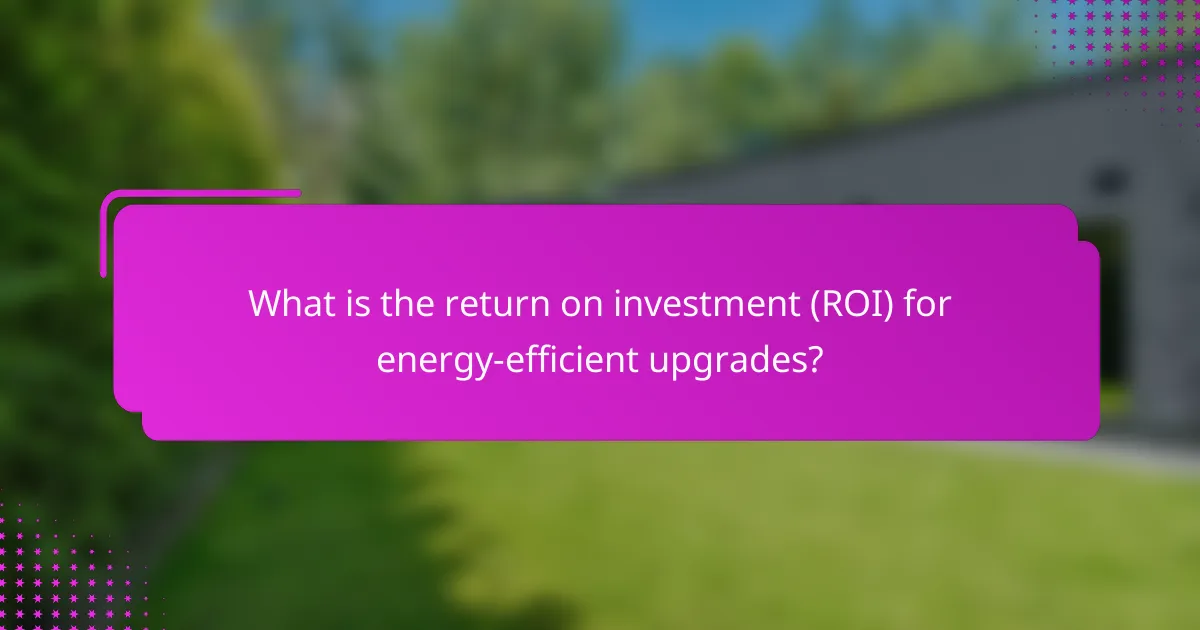
What is the return on investment (ROI) for energy-efficient upgrades?
The return on investment (ROI) for energy-efficient upgrades can be significant, often yielding savings that offset initial costs over time. Homeowners can expect varying returns based on the type of upgrade, local energy prices, and available incentives.
Average savings on energy bills
Energy-efficient upgrades can lead to average savings on energy bills ranging from 10% to 30%. For instance, upgrading to energy-efficient appliances or improving insulation can substantially reduce monthly utility costs. Homeowners should analyze their current energy usage to estimate potential savings accurately.
In some cases, local utility companies may offer rebates or incentives for implementing energy-efficient measures, further enhancing savings. Checking with local providers can provide additional financial benefits.
Impact on home value
Investing in energy-efficient upgrades can positively impact home value, often increasing it by 5% to 15%. Buyers are increasingly looking for homes with lower operating costs, making energy-efficient features attractive. Energy Star-rated appliances, high-efficiency HVAC systems, and solar panels can significantly enhance a property’s market appeal.
Moreover, homes with energy-efficient upgrades may sell faster than those without, as they align with growing consumer preferences for sustainability. This trend is particularly relevant in competitive real estate markets.
Payback period for upgrades
The payback period for energy-efficient upgrades typically ranges from 3 to 10 years, depending on the upgrade type and local energy costs. For example, installing solar panels may have a longer payback period, while replacing old windows can yield quicker returns. Homeowners should calculate the expected savings against the initial investment to determine the payback period.
To maximize ROI, prioritize upgrades with shorter payback periods and consider financing options that may spread costs over time. Regularly reviewing energy bills post-upgrade can help track savings and validate the investment’s effectiveness.
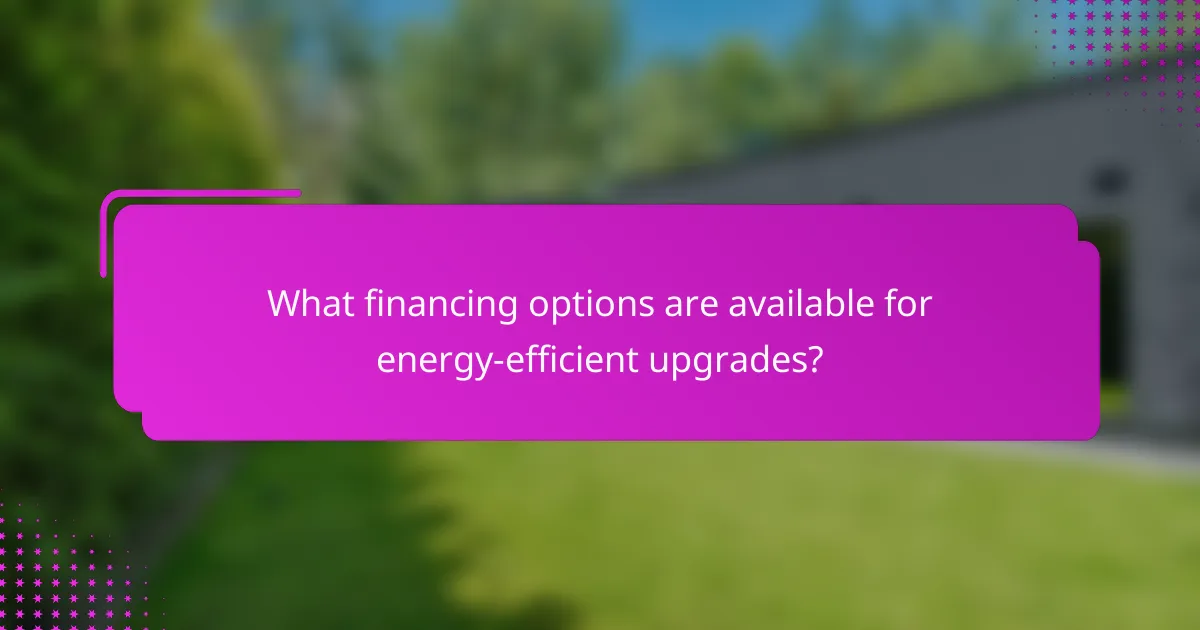
What financing options are available for energy-efficient upgrades?
Several financing options exist for energy-efficient upgrades, allowing homeowners to invest in improvements without immediate financial strain. These options include home equity loans and specialized energy efficiency loans, each with unique features and benefits.
Home equity loans
Home equity loans allow homeowners to borrow against the equity they have built in their property. Typically, these loans offer lower interest rates compared to personal loans because they are secured by the home. Borrowers can usually access a percentage of their home’s value, often ranging from 70% to 90% of the equity.
When considering a home equity loan, evaluate the total costs, including closing fees and interest rates. It’s crucial to ensure that the monthly payments fit within your budget, as failing to repay can lead to foreclosure.
Energy efficiency loans
Energy efficiency loans are specifically designed to finance upgrades that improve a home’s energy performance. These loans may come from banks, credit unions, or government programs, often featuring favorable terms such as lower interest rates or longer repayment periods. Some programs even offer no-interest loans for qualifying projects.
Before applying for an energy efficiency loan, check for local or state programs that may provide additional incentives or rebates. Be sure to compare the terms of different lenders to find the best fit for your financial situation and project needs.
